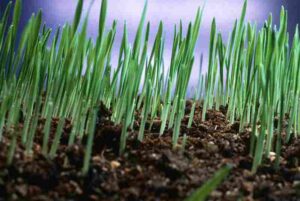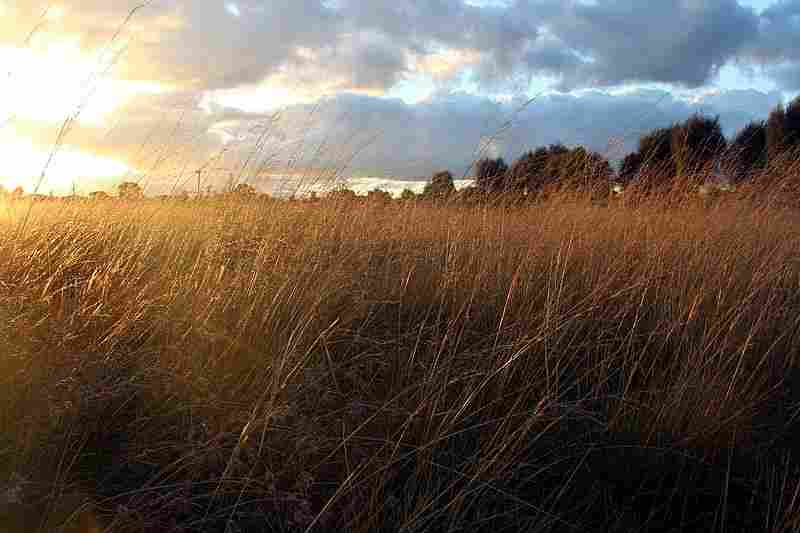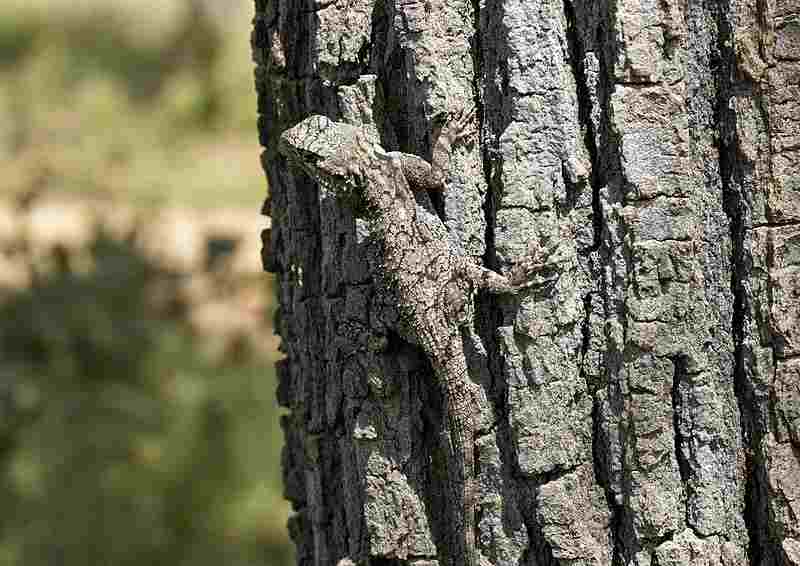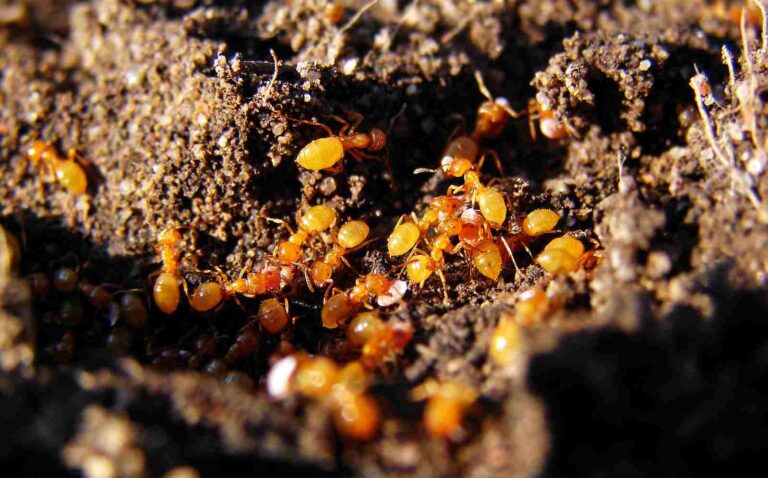7 Abiotic Factors in Temperate Grasslands and Their Characteristics
Abiotic factors in temperate grasslands are; sunlight, precipitation, rocks, sediments, physicochemical parameters, nutrients, and atmospheric gases.
This article discusses the abiotic factors in temperate grasslands, as follows;
1). Sunlight (as one of the Abiotic Factors in Temperate Grasslands)
Sunlight plays a definitive role in temperate grassland ecosystems, serving as a vital non-living component.
As an abiotic factor, sunlight is essential for the survival, growth and development of both plant and animal communities within the grassland. This implies that solar radiation in the form of light, serves as a link between abiotic and biotic factors in temperate grasslands.
Importance of Sunlight in Temperate Grasslands
Sunlight is important to the temperate grassland and other terrestrial ecosystems, for its involvement in photosynthesis, food production, plant-community structuring, water cycling, and temperature regulation.
Photosynthesis depends on sunlight as the primary source and form of energy to facilitate and sustain the process [2].
Through photosynthesis, plants capture and convert solar energy into chemical energy, which is then used to produce essential organic compounds like sugars which are necessary for their growth and general metabolism.
The foundation of the food chain in temperate grasslands is laid upon photosynthesis, which in turn requires sunlight.
As primary producers, grassland plants use sunlight to synthesis food that is made available to heterotrophic consumers.

Herbivores consume the plants directly, and initiate the transfer of energy up the food chain/energy pyramid, to carnivores and omnivores in higher trophic levels.
Availability of sunlight directly affects the rate of growth of plants. Adequate sunlight enables plants to photosynthesize efficiently and sufficiently, resulting in healthier growth than would occur in the absence of adequate sunlight.
Also, the magnitude and intensity of sunlight influences the distribution, structure and richness of plant species within the grassland biome [10]. This dynamic is also related to the adaptations and tolerance-levels of plants involved. Some species are better adapted to tolerate and thrive in high-intensity sunlight, while others are adapted to shaded conditions.
Water evaporation is another important abiotic process that is linked to sunlight.
Because solar radiation is accompanied by thermal effects, it facilitates and alters the process of water evaporation from plants, soil and water bodies like wetlands, lakes and ponds.
This means that it contributes to the water cycle in the temperate grassland.
Sunlight is involved in temperature regulation in grassland ecozones. It directly impacts ambient temperature and contributes to microclimate development within the ecosystem.
Overview of the Role of Sunlight in Grasslands
The role of sunlight in grasslands is multifaceted and multidimensional.
It is required for photosynthesis, which is responsible for the growth, development and generational continuity of plants, and constitutes the foundation of the food web.
The availability of sunlight influences plant distribution and diversity, and affects the biodiversity of all consumers in the grassland. In addition, sunlight influences temperature and hydrological cycling in the ecosystem, impacting the behavior, adaptability and biological performance of plants and animals.
2). Precipitation
Precipitation is a climatic element and essential abiotic component of temperate grassland ecosystems.
It can be described as water, in the form of rain or snow, that falls on the grassland; and can be measured on a time basis, such as annual estimation.
The amount, seasonality and duration of precipitation are all important factors that influence the aesthetics, ecological composition, and overall functionality of the temperate grassland as part of the Earth's terrestrial assemblage.
Importance of Precipitation in Temperate Grasslands
Precipitation is a primary source of water that recharges micro-aquatic ecosystems in the grassland.
It is also the primary water source to the soil, plants, animals, and microbial community in the grassland environment. This implies that adequate rainfall is needed for plant growth, and enables them to perform photosynthesis and function effectively as a foundation for the entire food chain.
The seasonality and amount of precipitation available in temperate grasslands, directly affect plant productivity [3]. Sufficient rainfall in the growing season will support the growth of lush vegetation, while drought conditions and dry seasons can cause reduced plant growth, which has a ripple effect on herbivores and other organic groups.
Biodiversity is also associated with precipitation, which influences the abundance and distribution of plant species, that determine the biological success of other trophic levels in the grassland.
Grassland plant and animal species have evolved to cope with the varying trends of precipitation in their environment. Some grassland animals survive drought through migratory behavior, while several plants have deep specialized roots to access water during dry periods.
The temperate grassland water cycle includes precipitation as a determinant component.
It replenishes soil water, groundwater, and recharges aquatic microhabitats like streams, thereby supporting the overall balance of the ecosystem.
Precipitation can also be said to contribute indirectly to the mitigation of soil erosion in temperate grasslands. This is because it supports plant growth, and facilitates the development of dense, deep root systems that hold soil particles firmly in place and enable the soil to withstand mechanical impact from agents of erosion.
An Estimate of Precipitation in Temperate Grasslands
The average annual precipitation in temperate grasslands typically ranges from around 50.8 to 88.9 cm (20-35 inches) [6]. This is a relatively low range, and accounts for the semiarid conditions and susceptibility to desertification that occur in this biome.
Rainfall in temperate grasslands, mainly occurs during the late spring and early summer, and coincides with the growing season for plant species.
Annual temperature range is generally broad in the region, reflecting significant seasonal fluctuations in climatic condition.
3). Rocks (as one of the Abiotic Factors in Temperate Grasslands)
Rocks occupy a notable position as non-living components of temperate grassland ecosystems.
Although they may be less conspicuous than living organisms, rocks contribute significantly to the ecological dynamics and sustainability of the grassland.
Functions and Importance of Rocks in Temperate Grasslands
Rocks are the primary source of mineral nutrients to soil and water in temperate grasslands.
Through processes of weathering and erosion, rocks break down into smaller components, and release essential minerals that accumulate in the soil (and water) [13]. The nutrient-rich soil that results from such processes, is able to support plant growth and sustain the entire grassland ecosystem.
Large rocks can contribute to water conservation by acting as natural water-proof barriers, which impede water flow and promote retention of water in the soil.
This function is particularly helpful during periods of heavy rainfall, as it both prevents soil erosion and supports water availability for plants and other grassland organisms.
Microhabitat creation is another function that can be attributed to rocks within the temperate grassland ecosystem. Small gaps and crevices in rocks, as well as physicochemical and topographic conditions facilitates by rock assemblages in parts of the grassland, can provide shelter for a variety of organisms.
Some of the organisms are reptiles, small mammals and insects. The microhabitats created by rocks offer protection from harsh environmental conditions and predators, thereby contributing to biodiversity in the grassland.

Certain rock types can influence the growth and distribution of plant species in the grassland. These plant species may thrive with specific soil types and nutrients derived from particular rocks, so that the presence of such rocks can result in healthy growth of vegetation within a given area.
It is important to consider that rocks in temperate grasslands are themselves important geological features that contribute to the overall aesthetic value and landscape characteristics of the ecosystem.
Thee rock add to the geological diversity of the grassland, and may have historical or cultural significance to local communities.
Large rocks or large assemblages of fragmented rock material, can stabilize the soil along slopes and loose sedimentary zones.
These rocks may slow down the flow of water during regional flooding or heavy rainfall. Erosion control is essential for maintaining the integrity of the grassland biome, and preventing the loss of fertile topsoil.
Rocks in the temperate grassland, like limestone, can store elemental carbon through the process of natural carbonation. This is a form of carbon sequestration, and can help to mitigate the environmental impact of greenhouse gas emissions and climate change.
4). Sediments
Sediments represent a notable, abiotic component of temperate grassland ecosystems, and are very similar in composition and relevance, to rocks.
Although they are often overlooked, sediments are important due to multiple functions which can be attributed to them in grasslands and other terrestrial ecosystems.
Functions and Importance of Sediments in Temperate Grasslands
Soil formation is a core function of sediments.
These sediments result from weathering and erosion processes, and constitute the earth materials in grassland soil.
As sediments accumulate over time, they enrich the soil with their mineral content, which is essential for the health and growth of temperate grassland plants.
Sediments also play a major part in the recycling of nutrients.
This is because they are natural reservoirs of organic biomass, and minerals. Sediments store and release essential elements like potassium, phosphorus and nitrogen [1]; which are crucial components of the nutrient cycle within the grassland ecosystem. Biodegradation of organic matter in sediments by decomposers, helps to enrich the soil with nutrients.
Sediments have a role to play in water regulation, within the grassland.
They can act as natural sponges that absorb and retain water; through a mechanism that helps prevent flooding in periods of heavy rainfall, and also maintains manageable moisture levels in the soil during dry periods, thereby supporting plant growth and animal survival.
Sediments create microhabitats within their crevices and pore spaces. Small depressions, pockets, pores in the soil may offer shelter and suitable living-conditions to various organisms like insects and small mammals; and may also support the dormancy and subsequent germination of plant seeds.
These microhabitats increase the biodiversity and ecological balance of the temperate grassland.
Sediments provide an ideal environment for the germination of seeds, from grasses and other plants.
These seeds may be embedded in the soil through any of various seed-dispersal mechanisms, allowing them to sprout and leading to continuous regeneration as well as colonization of virgin areas in the grassland.

Sediments can be combined with larger rock fragments that act as natural mechanical barriers that mitigate erosion, preventing the loss of organic-rich topsoil and preserving fertility and productivity.
Carbon sequestration occurs in temperate grassland sediments, which are suitable media for progressive storage of carbon over time. As organic matter continuously accumulates in the soil, it functions as a carbon sink, locking-in some of this carbon, and potentially helping to mitigate the effects of greenhouse gas emissions.
Aquatic ecosystems are also supported by sediments in grasslands.
These sediments provide essential nutrients to aquatic plants, and serve as habitat for bottom-dwelling aquatic organisms.
5). Physicochemical Parameters (as one of the Abiotic Factors in Temperate Grasslands)
As the term implies, physicochemical parameters refer to physical and chemical variables in the environment that control the conditions and processes occurring at any given time.
These variables influence the dynamics and functioning of temperate grassland ecosystems, and shape the ecosystem's structure, nutrient-related processes, and overall productivity.
Examples of Physicochemical Parameters in Temperate Grasslands
Some of the key physicochemical parameters in temperate grasslands are; temperature, precipitation, pH, soil moisture, nutrient availability, light intensity, and wind. They are discussed in this section.
Temperature is a critical factor that affects the growth, adaptation and survival of plants and animals in temperate grasslands.
It influences the rate of respiration, photosynthesis, and overall metabolism in organisms [8].
Temperature also determines the duration of the growing season and influences the abundance and spatial distribution of species within the ecosystem.
Precipitation is a climate-related physicochemical parameter that determines the availability of water in temperate grasslands. Adequate rainfall supports the productivity of grasses and other vegetation, which are primary food sources for other organisms.
The trend of precipitation influences the growth, life cycles and reproductive strategies of plants, as well as the behavior and ecological success of grassland animals.
Soil pH is a measure of the acidity or alkalinity of soil [7], and it greatly influences the availability of nutrients and survival of plants.
Different plant species have varying pH preferences, so that the pH of soil in any temperate grassland affects the distribution, abundance and diversity of plant communities in the ecosystem.
Optimal soil pH is required for maximum nutrient uptake and performance by plants.
Soil moisture levels have a direct impact on plants in temperate grasslands; determining their health and continuity.
Plants require optimal soil moisture in order for their roots to absorb sufficient nutrients and water. It is also needed for seed germination, root development, and overall plant wellbeing.
Because of variations in requirements, the availability of moisture also influences the occurrence and abundance of different plant species in the temperate grassland.
Nutrient availability is an essential physicochemical parameter that evaluates the presence and concentration of essential nutrients like phosphorus and nitrogen, phosphorus, in the soil.
It is a critical metric for the productivity of plants. Nutrients are needed for plant cell division, photosynthesis, and overall development.
Processes of nutrient cycling are influenced by other physicochemical factors like soil moisture and temperature, which work together to control nutrient availability in the grassland biome.
Light intensity determines the rate and effectiveness of photosynthesis in temperate grassland plants.
The amount of sunlight received by plants directly impacts their growth and rate of primary production.
Light intensity also influences the activities and behaviors of herbivores, carnivores and omnivores, all of which rely on plant biomass as their primary source of food.
The direction and speed of wind, can affect the rate of evaporation from the soil, and the pattern of plant transpiration [11]. Wind also influences the distribution and dispersal of pollen and seeds, which can impact reproduction in the plant community, and the degree of vegetation coverage of the landscape.

6). Nutrients
Nutrients are abiotic factors in temperate grasslands, which contribute directly to the growth, functioning and productivity of the entire biome.
They are a group of important elements (and compounds) that are required for the survival and growth of plants, which, as already stated, are the foundation of the grassland food chain.
Aspects of the Importance of Nutrients in Temperate Grasslands
Some important factors that indicate the importance of nutrients in temperate grasslands include their role(s) in primary production, biodiversity sustenance, and energy transfer. These and more are discussed below.
Nutrients like phosphorus, potassium and nitrogen, are vital for primary production in autotrophs, within temperate grasslands.
These elements are essential constituents of chlorophyll, enzymes and plant proteins, which are all critical for metabolic processes like photosynthesis.
Adequate supply and access to nutrients, has a positive effect on plant productivity, and determine the amount of biomass that is made available to support herbivores and higher consumers in the ecosystem.
Nutrients in temperate grasslands are subject to a naturally-driven, continuous loop known as the nutrient cycle. Decomposers, like fungi and bacteria, break down organic matter, and release nutrients back into the soil. These nutrients are subsequently taken up by plants, and flow through the food web across multiple trophic levels, as plants are consumed by herbivores, and herbivores become prey for carnivores.
Nutrient cycling helps maintain the availability of nutrients, and to ensure that essential elements are conserved through recycling, and not wasted or lost from the ecosystem.
The availability of nutrients can also influence the species composition and diversity of plants in temperate grasslands.
Different plant species have varying nutrient requirements [5], which means that the availability of certain nutrients can favor the growth of particular plant assemblages, above others. Through such dynamics, nutrient availability can influence the overall structure and biodiversity of the grassland ecosystem.
Because they are passed from one trophic level to the next, nutrients can be said to play a central role in energy transfer, in the temperate grassland.
Soil fertility benefits immensely from nutrients in temperate grasslands. As organic matter decomposes, it releases nutrients into the soil, thereby enriching it.
Fertile soils support the growth of healthy and highly-productive plant communities, which create suitable microhabitats and serve as food sources for diverse animals and microorganisms.
Plant resistance to external disturbances including unfavorable climate, disease outbreaks, pest infestation, and other kind of organic activity, is reinforced by nutrients.
Adequate supply of essential nutrients helps plants develop effective mechanism that increase their resilience under diverse conditions. On a large scale, this results in better stability of the ecosystem.
7). Atmospheric Gases (as one of the Abiotic Factors in Temperate Grasslands)
Atmospheric gases, like carbon dioxide, nitrogen and oxygen, are essential abiotic components of the temperate grassland.
These gases play determinant roles in the survival of various life forms and biological processes.
Functions and Importance of Atmospheric Gases in Temperate Grasslands
Oxygen (O2) is arguably the most important atmospheric gas due to its role in aerobic respiration, that is carried out by most living organisms to release energy from food [9].
In temperate grasslands; microbes, plants, and animals, rely on oxygen for their cellular respiration, which yields energy for daily physiological activities, reproduction, and growth..
Additionally, oxygen in the soil supports aerobic decomposition by microbes, whereby organic matter is broken down into simpler compounds.
Carbon Dioxide (CO2) is a required ingredient or raw material for photosynthesis, which plants carry out to produce glucose and oxygen.
In temperate grasslands, plants capture and absorb atmospheric carbon dioxide, incorporating it into their own tissues, through photosynthesis. This facilitates plant growth and contributes to carbon sequestration, as carbon is retained in plant biomass and soil, thereby helping in the mitigation of unfavorable climatic changes.
Nitrogen (N2) is the most abundant atmospheric gas on Earth [4], although its gaseous form is inert and cannot be directly utilized by most grassland organisms.
Certain bacteria known as nitrogen-fixing bacteria, can convert atmospheric nitrogen to a usable form, such as nitrate or ammonia, through a process referred to as nitrogen fixation.
As a result of nitrogen fixation, nitrogen becomes biologically available for uptake and consumption by plants, being itself a critical constituent of nucleic acids and proteins in living organisms.
Other atmospheric gases, like ozone (O3) and methane (CH4), are also ecologically significant in temperate grasslands.
Ozone in the stratosphere helps protect the ecosystem from harmful ultraviolet radiation.
Methane is produced during anaerobic decomposition by certain bacteria, and can act as a highly-potent greenhouse gas [12].
*Status of Atmospheric Gases as Abiotic Factors
Atmospheric gases are considered abiotic factors, because they are non-living, inorganic components of an ecosystem that have significant impacts on living organisms and ecological processes within their environment.
Being non-living elements, atmospheric gases fit into the abiotic category and play key roles in supporting different life processes and maintaining ecological equilibrium.
Conclusion
Abiotic factors in temperate grasslands are;
1. Sunlight
2. Precipitation
3. Rocks
4. Sediments
5. Physicochemical Parameters
6. Nutrients
7. Atmospheric Gases
References
1). Ajithamol, A.; Venkadesh, B.; Babu, M. M.; Saraswathy, S. (2016). "Impacts of nutrients nitrogen, phosphorus, potassium and their role in the sediment of Manakudy estuary, Tamilnadu, S. India." International Journal of Current Research Vol. 8,(, 04,):pp.29248-29251. Available at: http://www.journalcra.com/article/impacts-nutrients-nitrogen-phosphorus-potassium-and-their-role-sediment-manakudy-estuary. (Accessed 5 August 2023).
2). Barber, J.; Tran, P. D. (2013). "From natural to artificial photosynthesis." J R Soc Interface. 2013 Jan 30;10(81):20120984. Available at: https://doi.org/10.1098/rsif.2012.0984. (Accessed 5 July 2023).
3). Feng, H.; Wang, K.; Hannaway, D.; Li, X. (2017). "Effects of precipitation and clipping intensity on net primary productivity and composition of a Leymus chinensis temperate grassland steppe." PLoS ONE 12(12):e0190450. Available at: https://doi.org/10.1371/journal.pone.0190450. (Accessed 5 August 2023).
4). Karki, B.; Dhobi, S. H.; Nakarmi, J. J. (2020). "The Concentration of Molecular Nitrogen, Oxygen, Argon and Helium above Dang, Pokhara and Kathmandu Valley, 2020." Journal of Materials and Environmental Sciences 12(11):1504-1515. Available at: https://www.researchgate.net/publication/357447893_The_Concentration_of_Molecular_Nitrogen_Oxygen_Argon_and_Helium_above_Dang_Pokhara_and_Kathmandu_Valley_2020. (Accessed 5 August 2023).
5). Lal Sahrawat, K. L. (2006). "Plant nutrients: sufficiency and requirements." Encyclopedia of Soil Science Second Edition (pp.1306-1310.). Available at: https://www.researchgate.net/publication/267316294_Plant_nutrients_sufficiency_and_requirements. (Accessed 5 August 2023).
6). Neal, E. (2021). "Climate in Temperate Grasslands." Available at: https://sciencing.com/climate-temperate-grasslands-8038155.html. (Accessed 5 August 2023).
7). Oshunsanya, S. (2019). "Introductory Chapter: Relevance of Soil pH to Agriculture." Soil pH for Nutrient Availability and Crop Performance. Available at: https://doi.org/10.5772/intechopen.82551. (Accessed 5 August 2023).
8). Rasmusson, L.; Buapet, P.; George, R.; Gullström, M.; Gunnarsson, P. C. B.; Björk, M. (2020). "Effects of temperature and hypoxia on respiration, photorespiration, and photosynthesis of seagrass leaves from contrasting temperature regimes." ICES Journal of Marine Science 77(6). Available at: https://doi.org/10.1093/icesjms/fsaa093. (Accessed 5 July 2023).
9). Schmidt-Rohr, K. (2020). "Oxygen Is the High-Energy Molecule Powering Complex Multicellular Life: Fundamental Corrections to Traditional Bioenergetics." ACS Omega XXXX(XXX). Available at: https://doi.org/10.1021/acsomega.9b03352. (Accessed 5 July 2023).
10). Schrautzer, J.; Jensen, K. (2008). "Relationship between light availability and species richness during fen grassland succession." Nordic Journal of Botany 24(3):341 - 353. Available at: https://doi.org/10.1111/j.1756-1051.2004.tb00849.x. (Accessed 5 July 2023).
11). Schymanski, S. J. (2015). "Wind effects on leaf transpiration challenge the concept of "potential evaporation"". Proceedings of the International Association of Hydrological Sciences 371:99-107. Available at: https://doi.org/10.5194/piahs-371-99-2015. (Accessed 5 July 2023).
12). Stein, L. Y. (2020). "The Long-Term Relationship between Microbial Metabolism and Greenhouse Gases." Trends Microbiol. 2020 Jun;28(6):500-511. Available at: https://doi.org/10.1016/j.tim.2020.01.006. (Accessed 5 July 2023).
13). Zhu, B.; Wang, T.; You, X.; Gao, M.-R. (2008). "Nutrient Release from Weathering of Purplish Rocks in the Sichuan Basin, China1." Pedosphere 18(2):257–264. Available at: https://doi.org/10.1016/S1002-0160(08)60015-6. (Accessed 5 July 2023).










